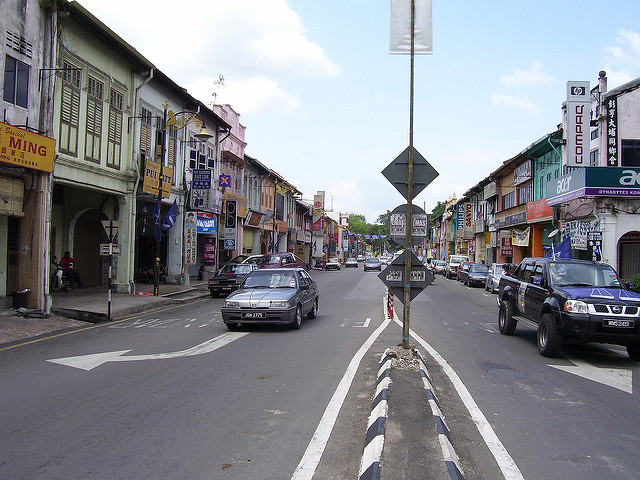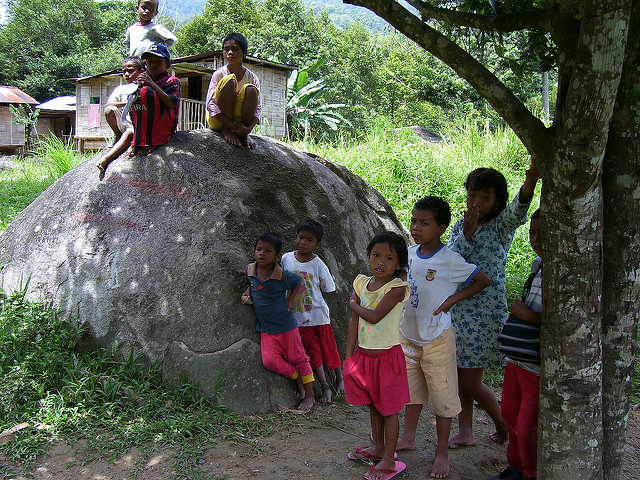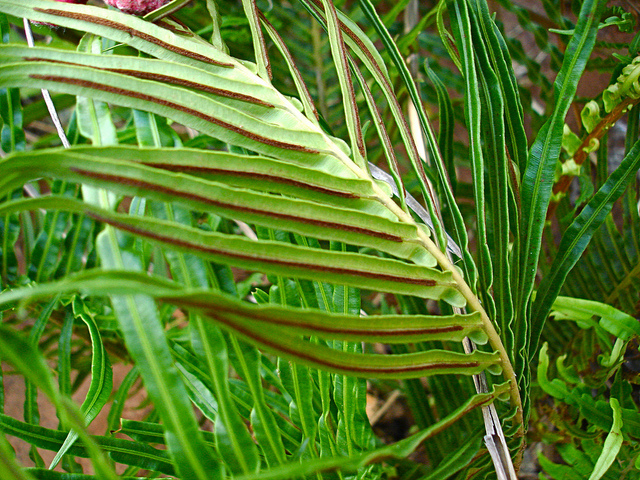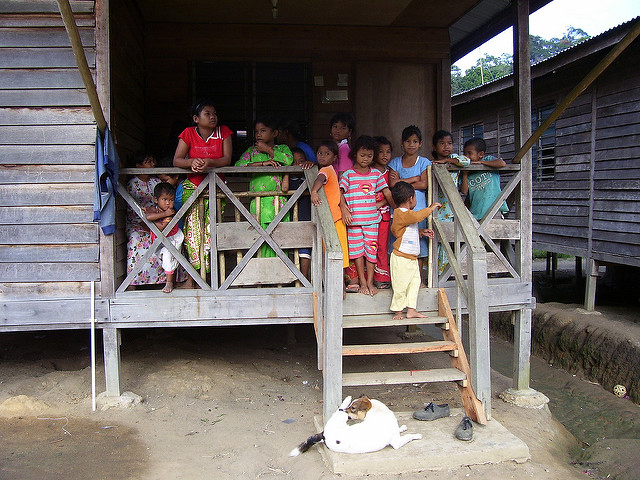A community learning center in Malaysia serves to integrate, for some Semai children, formal academic classroom subjects with lessons about their traditional culture. A school day might begin with instruction in reading, writing, and math presented by their teacher, but it would be followed by the fun of learning to play the chentong, a musical instrument, or performances of a traditional dance called the sewang.

A Malaysian news service last week published a report about the learning center, located in Kampung Tual, near the town of Raub in Pahang State. It focused on the values the staff members are trying to convey to the Semai kids. Called the Cenwaey Penaney, meaning “shoots of ingenuity” in the Semai language, the learning center serves about 100 children from two settlements in Kampung Tual known as A and B. It was opened in April 2014.
The leader of Kampung Tual A, Harun Siden, told the reporter that it was essential for the youths to understand their roots and their Semai identity. “Otherwise, they won’t know or they will forget who they are,” he said. He also serves as one of the teachers at the center most afternoons. He teaches the history, culture, and language of the Semai, along with sharing folk stories. He frequently holds his classes outdoors.

The week before last, Harun took a group of kids to a riverbank where he told them one of the village folktales about a big rock. He told the journalist that the lessons he presents help instill in the children a stronger sense of self confidence, which he argued they will need when they leave the village. When they attend the local school, which is not in Kampung Tual, they sometimes are bullied and teased. “They don’t know how to defend themselves and they want to run away [from school]. We must teach them to defend themselves. They should not run,” he argued. As a child he was teased about his Orang Asli heritage.
The community center in Kampung Tual was started by a staff member of the Centre for Orang Asli Concerns, a Temuan woman named Jenita Engi, and the current teacher, Miwes Masital. According to Dr. Colin Nicholas, the Coordinator of COAC, Jenita got a diploma in early childhood education and wanted to start a bi-cultural program in an Orang Asli community. They took her idea to the Semai in Kampung Tual and, after several meetings, the people “embraced the idea,” Nicholas said. At first the initiators just proposed a preschool but it has since grown to include children ages 2 to 15.

Nicholas told the reporter that it was important to adapt the academic curriculum to the perspectives and needs of the Semai. He added that similar programs have been started in other Orang Asli communities—the program in Kampung Tual is not the first. Jenita did the work to develop the structure of the school program to suit the perspective of the community. It was her decision, after talking with the villagers, to incorporate units on medicinal plants, folk tales, and traditional crafts in the curriculum.
Nicholas explained that the pedagogy of the Semai is quite different from that of mainstream Malaysia, where a geography teacher teaches geography and a science teacher teaches science. In contrast, in Kampung Tual, the village and the school are one and the same. Everybody teaches—elders, parents, and relatives. Anyone with a particular knowledge or skill will pass it along to all the children of the village.

The community center was built by the people of Kampung Tual, with quarters for staff, a few classrooms, and a library. The students are given a daily meal in the facility. The center is staffed by three teachers, two assistants, two kitchen helpers, and a gardener. It is not intended as a replacement for the state-supported school but rather as a learning center that supplements it. It serves the needs of students in ways that the general school can’t do.
A nearby schoolteacher visited the learning center three or four months after it opened and she quickly spotted a difference in the children. They were more willing to participate, to talk, and to speak up She was curious as to why the change. After Nicholas analyzed the change, he decided that the major issue was one of trust—the kids trust the staff. “They trust their teachers because the teachers are from their own village or people they know,” he said.

And it was the children who suggested the idea of growing vegetables at the center. They came up with the plan when it was explained to them that funds were running low. Miwes told the reporter that the children help the gardener in the vegetable patch. He added that the center is running short of funds since the major funding agency has ended its sponsorship. The Center for Orang Asli Concerns would doubtless appreciate hearing from readers who might have insights into sources of funding for the innovative community center and its school program.
In July 2014 some news stories focused on the opening of the community center in Kampung Tual a few months before. A very prominent sports figure, at the time the world’s foremost woman squash player, Nicol David, visited Kampung Tual.
She was quoted as saying about the community, “The villagers have been so warm and welcoming. They are so open and willing to learn. You can see that they’ve got so much potential and that if we were to just give them a little bit of support, they would then go the extra mile.” It is clear that her prediction was correct—they are going the extra mile for their school and its approach.